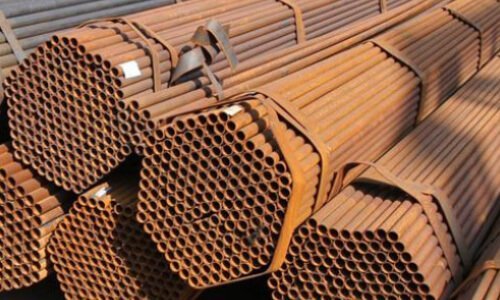Corten pipes have become a popular choice in modern construction and design for their strength and visual appeal and their significant environmental advantages. As sustainability becomes a central concern in industries worldwide, architects, engineers, and designers increasingly prioritize materials that align with eco-friendly practices. Corten pipes offer an ideal solution due to their durability, recyclability, and ability to reduce environmental impact. Here, we explore the key environmental benefits of using Corten pipes in various applications.
Durability Reduces Material Waste
Even in harsh environmental conditions, the Corten pipe is designed to last decades. Their longevity directly contributes to reduced material waste in construction and design projects.
Self-Healing Patina: The natural patina that develops on the surface of Corten pipes protects them from corrosion. This feature eliminates the need for frequent replacements and ensures that structures maintain their integrity for longer.
Less Frequent Repairs: Durable materials like Corten pipes reduce the frequency of maintenance and repairs, reducing the energy and resources required to address structural degradation.
Waste Minimization: Fewer replacements mean less waste generated from discarded materials, supporting sustainable building practices.
When projects require long-lasting materials, Corten pipes ensure both environmental and economic benefits.
Recyclability Promotes Sustainable Practices
Corten pipes are fully recyclable, making them an eco-friendly choice for projects focused on sustainability.
Reuse in New Applications: At the end of their lifecycle, Corten pipes can be melted down and repurposed into new steel products without losing their quality or strength.
Energy Efficiency in Recycling: Recycling steel requires significantly less energy than producing virgin steel. This reduction in energy consumption helps lower greenhouse gas emissions.
Circular Economy: By using recyclable materials like Corten pipes, industries contribute to a circular economy, where resources are reused rather than discarded.
Choosing recyclable materials such as Corten pipes helps reduce environmental impact and supports global efforts toward a sustainable future.
Reduced Need for Coatings and Chemicals
Traditional steel materials often require protective coatings or chemical treatments to prevent rust and corrosion. These coatings can harm the environment during application and disposal. Corten pipes eliminate the need for such treatments.
Natural Protection: The patina on Corten pipes forms naturally when exposed to the elements, creating a protective layer without requiring additional chemicals.
Reduced Emissions: By avoiding paints, sealants, and other coatings, Corten pipes lower the emission of volatile organic compounds (VOCs) that contribute to air pollution.
Environmental Safety: The absence of harmful coatings ensures that no toxic substances leach into the soil or water, preserving the surrounding ecosystem.
Corten pipes provide a safe and sustainable alternative to chemically treated materials, aligning with eco-conscious construction practices.
Energy Efficiency in Production
The production process of Corten steel involves energy-efficient methods that contribute to its eco-friendly nature.
Optimized Alloy Composition: Corten steel uses a specific blend of alloys, including copper, chromium, and nickel, which enhance its weathering properties without excessive energy consumption during production.
Longevity Reduces Resource Demand: The extended lifespan of Corten pipes reduces the overall demand for raw materials, which in turn lowers the energy required for mining, processing, and manufacturing.
Sustainable Manufacturing Processes: Many steel manufacturers implement green practices, such as recycling water and minimizing energy use while producing Corten pipes.
By choosing materials like Corten pipes, industries can minimize their carbon footprint and promote sustainable production practices.
Supporting Green Building Certifications
Corten pipes help projects achieve certifications like LEED (Leadership in Energy and Environmental Design) and other green building standards.
Material Efficiency: Corten pipes qualify as sustainable materials due to their recyclability, durability, and minimal maintenance requirements.
Energy Savings: Projects incorporating Corten pipes often require fewer resources over time, contributing to energy-efficient construction.
Eco-Friendly Aesthetics: The natural, weathered appearance of Corten pipes eliminates the need for decorative finishes, further reducing resource use.
Using Corten pipes demonstrates a commitment to sustainability and aligns with global trends in environmentally responsible construction.
Reduced Carbon Footprint of Transportation
Corten pipes contribute to a reduced carbon footprint in transportation and logistics.
Lightweight for Transport: Compared to some alternative materials, Corten steel offers high strength-to-weight ratios, enabling more efficient transportation and reducing fuel consumption.
Less Frequent Deliveries: The long lifespan of Corten pipes means fewer replacements are needed, resulting in reduced transportation needs over the lifecycle of a project.
By minimizing transportation emissions, Corten pipes support eco-friendly logistics and construction processes.
Application in Eco-Friendly Projects
Corten pipes integrate seamlessly into projects that prioritize sustainability and environmental harmony.
Rainwater Harvesting Systems: Corten pipes serve as durable conduits in rainwater collection systems, promoting water conservation and efficient resource use.
Green Roofs and Vertical Gardens: Architects use Corten pipes to support plant life in green roofs and living walls, enhancing urban greenery and biodiversity.
Sustainable Landscaping: Corten pipes feature prominently in eco-friendly landscaping projects, such as retaining walls, drainage systems, and garden sculptures.
By incorporating Corten pipes into green initiatives, designers and engineers can create projects that align with ecological goals.








